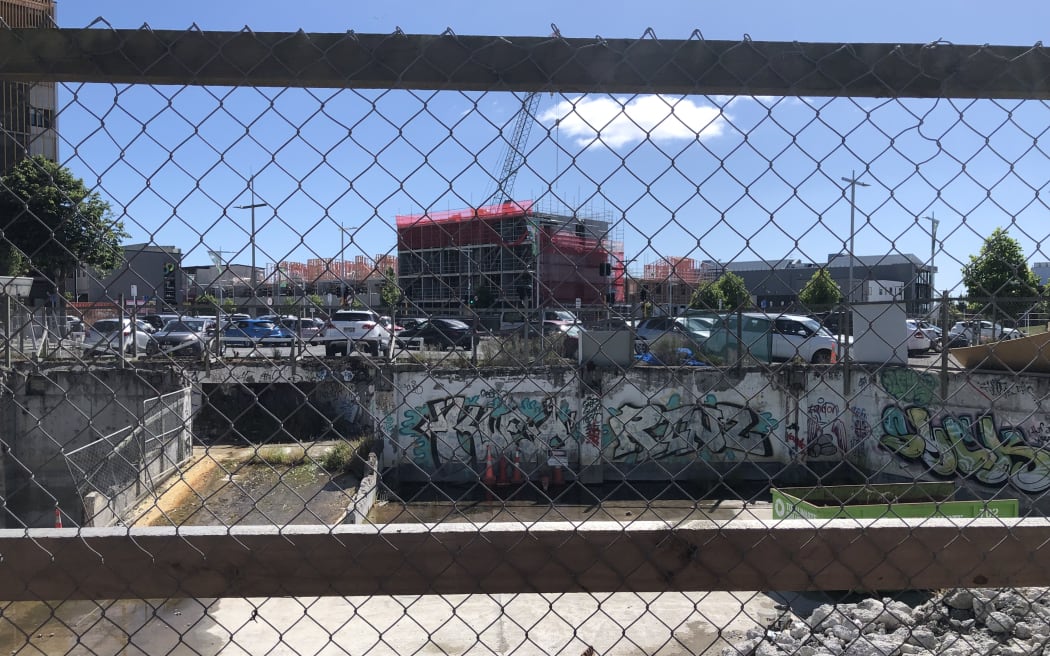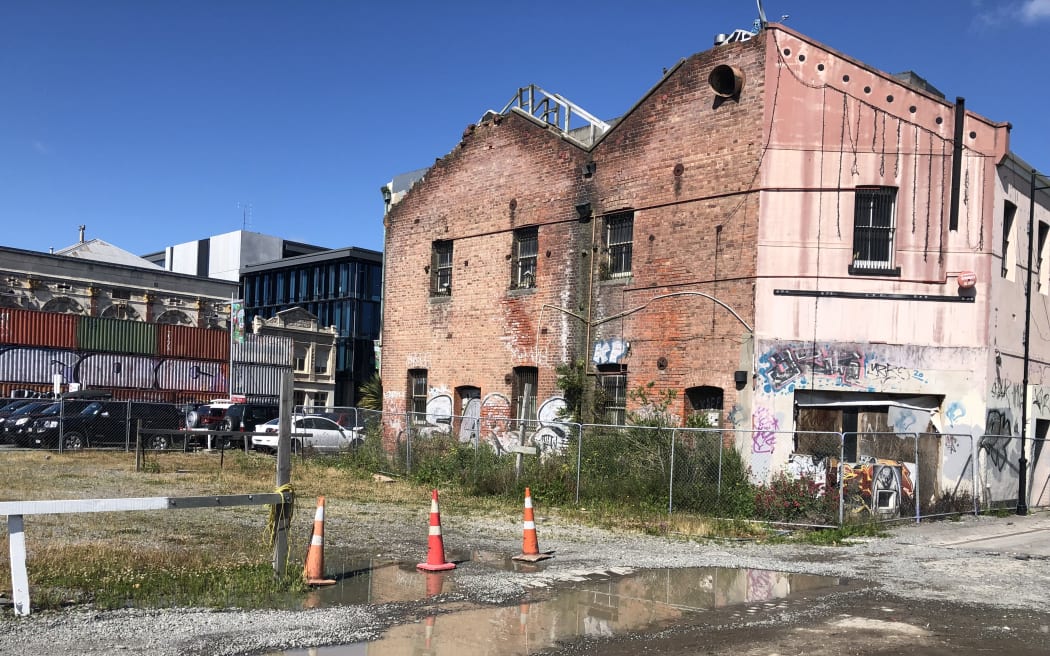The Christchurch rebuild has disappeared from the headlines, but The Detail pays a visit to check on the progress that's been made in the more than a decade since the quakes.

An empty site in central Christchurch Photo: The Detail/Sharon Brettkelly
Insurance battles, derelict houses, families forced to flee their homes and never return. They are all part of the story of Christchurch's quake-damaged, 602-hectare red zone.
Now, its a place where locals walk their dogs, children play, and a drone club has regular meetings.
But there are still remnants of its past: a rose bush that someone once prized, fruit trees that once grew in a backyard, even part of an abandoned road runs through what is now a park.
RNZ journalist and longtime Christchurch resident Rachel Graham has watched its transformation over the years since the earthquake.
"It was pretty awful. It took them till about 2015 to finish all of the demolition.
"You had people who were made these red zone offers. People would have been torn about whether that's what they wanted or not, but I guess [it was] a solution to get you out of a home that's broken, continuing aftershocks, the liquefaction process bringing the water up again, flooding streets again."
Graham is telling The Detail of her own experience as a North Brighton resident passing through the red zone every day.
She describes the feeling driving along Pages Road - red-zoned on both sides - that for a long time was derelict buildings.
"You go from being a neighbourhood one day, to a couple of months later people moving out, and then the houses just get left. That was pretty creepy," she says.
"But now I go and walk my dog in the red zone all the time. They're basically parks. I've got a 10-year-old son, he thinks of them as parks."
Graham thinks of it as a positive space that is now well used by the community and she hopes the former homeowners feel the same.
"You've got people around rather than a great big empty lot with derelict homes."
Graham takes The Detail on a tour of central Christchurch, to check on the progress of the rebuild, since the earthquakes more than a decade ago.

There are still parts of central Christchurch in need of remedial attention Photo: The Detail/Sharon Brettkelly
"There's still a lot of holes and a lot of carparks," says Graham, surveying the new-builds from the Bridge of Remembrance on Cashel Street.
But in this city where reconstruction will take many more years, an empty lot is considered progress.
"It's no longer a scruffy old damaged building. And then there are quite a few office blocks that have gone up that have never really reached potential."
She points to one office block that was completed in 2018 that still has no ground floor tenants.
Graham shows The Detail some of the so-called "dirty 30" - as well as projects that are deemed reconstruction success stories such as the Margaret Mahy playground, Riverside Market and the Justice Precinct next door, which hit the headlines for the long delays and budget blowout on its development.
"Everything's been delayed. It did get to the point where the ministers in charge of various projects just wouldn't talk about timelines," Graham says. "We would have it sellotaped in our office about when they said things were going to happen and that would come and go."
She says people needed timelines, especially during the years when central Christchurch was a demolition zone.

A damaged building under repair in central Christchurch Photo: The Detail/Sharon Brettkelly
Some residents still avoid coming back to the centre because of the memories of what it was.
"Some people do miss the old buildings, some heritage, some cheaper but they had a bit of charm but they also had very dangerous facades.
"So you had that issue of what you hold onto that's going to take you 10 years and has still got a row of containers and scaffolding or do you knock it down and put up something that may be a little bit more utilitarian but it there and usable."
Find out how to listen and subscribe to The Detail here.
You can also stay up-to-date by liking us on Facebook or following us on Twitter.

Photo:


